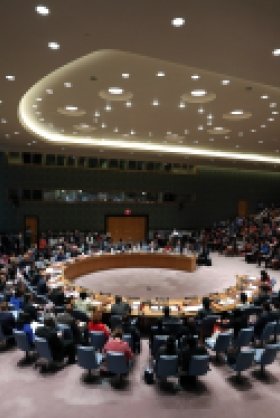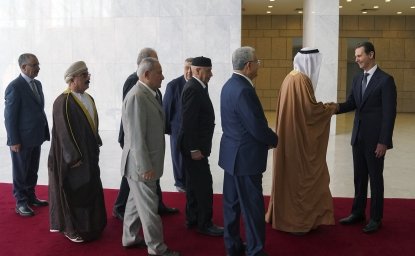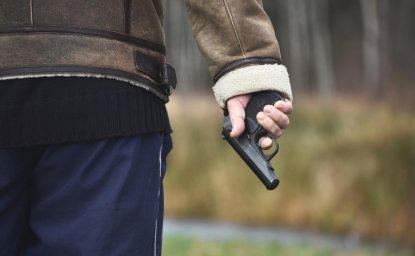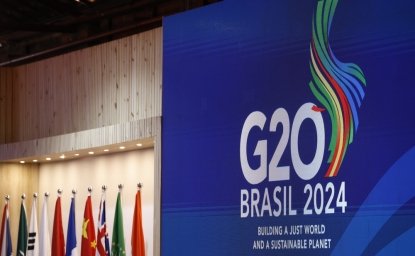Kennan Cable No.26: Women’s Organizations Peacebuilding across Conflicts in the Former Soviet Union


The collapse of the Soviet Union spurred numerous conflicts at the edges of the former empire. Many of these ethnic conflicts, including Chechnya (Russian Federation), Transnistria (Moldova), Nagorno-Karabakh (Armenia-Azerbaijan), and Abkhazia (Georgia), have turned into frozen conflicts. However, the outbreak of the 2008 war in Georgia and the 2014 war in Eastern Ukraine demonstrated the consequences of open military conflict for the region. Lasting peace remains elusive for populations living in the conflict zones, whether in one of the established frozen conflicts or on the front lines of one of the separatist wars still underway.
Civilians are increasingly targeted as a tactic in this kind of war. Local population respond as best they can, leading to the emergence of women’s NGOs as a key provider of essential services and humanitarian aid. These protracted conflicts and wars need innovative responses. The women who lead the way on the ground of these conflicts provide critical social services, aid, and cross-front communications. Women are also logical partners in peacebuilding efforts integral to solve frozen and active conflicts in the former Soviet Union. This is because women “build trust, engage all sides, and foster dialogue in otherwise acrimonious settings.”[i] The argument for involving women’s groups goes beyond local experience. Research on conflict resolution worldwide demonstrates the effectiveness of involving women’s groups: Essentially, when women’s groups actively participate in the negotiation process, peace is almost always achieved.[ii] Women in Peace Negotiations around the World Resolution 1325, adopted by the United Nations Security Council in 2000, offers an outline for including women in peace negotiations. It calls for the inclusion of gender perspectives, the participation of women in all United Nations peace and security efforts, and collaboration with civil society organizations. The resolution noted “the important role of women in the prevention and resolution of conflicts, peace negotiations, peace-building, peacekeeping, humanitarian response and in post-conflict reconstruction and stresses the importance of their equal participation and full involvement in all efforts for the maintenance and promotion of peace and security.”[iii] This Security Council resolution is a binding agreement for all member states, but most of the countries in the region failed to include women in peace discussions in any of the post-Soviet conflicts. UN Resolution 1325 is not a symbolic policy. The UN reports that when women are involved in the peace process, “there is a 20 per cent increase in the probability of an agreement lasting at least 2 years, and a 35 percent increase in the probability of an agreement lasting at least 15 years.”[iv]
The prospects for sustaining peace are further improved with increased representation by women in parliament. Despite evidence that demonstrates post-conflict countries are on average four percentage points below the global average (22.7 percent) of women in parliament, gender quotas allocating specific seats in post-conflict societies can diminish this difference.[v] Research shows that “higher levels of female participation in parliament reduce the risks of civil war.”[vi]
Gender equality is a better indicator of a peaceful society than democracy, religion, or GDP and gender inequality is a predictor of armed conflict.[vii] Including women in the negotiations from the start can have a lasting impact on how political power and resources are allocated, thus shaping the society’s future.[viii] In El Salvador, women were included in negotiations and women made up one third of the beneficiaries of land redistribution and reintegration packages in the post-conflict society.[ix] In South Africa, women were also included in the negotiations and gender quotas were established which provided women with more representation and political power in the government after the conflict.[x] Although very few negotiations have done this, data from a small number of cases reveals that the “empowerment, mobilization and involvement of women’s groups during the peacemaking phase can only support their engagement during the always-difficult phase of implementation and peacebuilding.”[xi]
Despite all of these successes, women are more often than not marginalized from formal peace negotiations and post-conflict planning.[xii] In fact, only 3.8 percent of signatories to peace agreements and 4.5 percent of negotiating teams at peace tables from 2000-2011were women.[xiii] This reveals systematic exclusion as “the underrepresentation of women at the peace table is much more marked than in other public decision-making roles, where women are still underrepresented but where the gap has been steadily narrowing.”[xiv] However, trends are changing. Columbian peace negotiations included one-third women on both sides of the conflict, acting as negotiators, delegates, and gender advisors (responsible for promoting the inclusion of gender sensitive provisions geared towards the needs of women and the civilian population—groups often overlooked during peace negotiations).[xv] For the first time, a gender subcommittee was established, and the final peace agreement included a chapter on gender and gender mainstreaming language.[xvi] This inclusion of gendered language is significant as “less than a third of all agreements since 2000 include language on gender.”[xvii] Since most peace agreements focus on military cease fires and security issues that do not focus on women and civilians, the inclusion of language recognizing women’s fundamental human rights, violence against women, and political rights to vote and run for office is important for building a more peaceful post-conflict society.
The Women Missing from Minsk and Georgia
Negotiators on all sides ignored UN Resolution 1325 during both of the Minsk Agreements on the war in Eastern Ukraine. The Trilateral Contact Groups, charged with facilitating a diplomatic resolution and hammering out the nuts and bolts of a peace plan, contained representatives from Ukraine, the Russian Federation, and the Organization for Security and Co-operation in Europe (OSCE). This group included only two women from the Ukrainian side: Irina Gerashchenko (the First Vice Speaker of the Verkhovna Rada, who participated in the working group on humanitarian affairs from the Ukraine trilateral contact group), and Olha Aivazovska (from the NGO OPORA Civic Network, who was appointed to the political subgroup of the Trilateral Contact Group in April 2016). Intergovernmental organizations, such as the OSCE Special Monitoring Mission in Ukraine, appointed gender advisors at the very outset of the war in 2014, and were more likely than national governments to comply with the gender monitoring required in Resolution 1325.[xviii] In 2008, only the Georgian delegation included women during the Geneva International Discussions that ended the Georgia-Russia war. According to the Internally Displaced Persons Women’s Association (IDPWA) “Consent,” the negotiators received briefings on Resolution 1325 and the specific women’s issues arising from the war. Those briefings failed to bring about any tangible results in the final agreement.[xix] The women of Georgia remain excluded from political life, even in local councils where significant decisions are made regarding housing and assistance for internally displaced persons (IDPs)—issues where women’s NGOs played and continue to play a crucial role.[xx] In general, international mediators do not prioritize gender issues and portray women as instruments rather than agents of mediation.[xxi] Since women’s NGOs often focus on humanitarian issues, they are often relegated to the second tier at peace negotiations, relative to the male politicians and think tank experts specializing in conflict analysis in the post-Soviet region.[xxii] This exclusion was so apparent in Ukraine that Women of the Don Union, located in Novocherkassk, Rostov region Russia, organized a shadow Minsk session around a project entitled “Civic Minsk” for NGOs on both sides of the conflict. This shadow Minsk session developed a concrete regional platform for peacebuilding including humanitarian assistance, aid, and prisoner exchanges.
Grassroots Reponses to War: Women’s NGOs Lead the Way
Women’s NGOs in the region refuse to wait for an invitation to join the negotiations. They have already started working on many of the “Civic Minsk” peacebuilding initiatives. These women possess the experience and networks for peacebuilding work, have direct awareness of the current status of the conflict, and know what solutions have the best prospects for success. The Women’s Information Consultative Center (WICC) worked together with La Strada in Ukraine to develop a National Action Plan to push Ukraine’s government to fulfill the requirements of Resolution 1325.[xxiii] The plan outlines a number of ways to involve women in the peace building process and conflict prevention, including conflict monitoring and appointing women to Ukraine’s delegations and monitoring missions.[xxiv] Though promising, many of its recommendations are vague and assign implementation to ministries that lack the budget to address most items in the plan. Similarly, IDPWA worked with other women’s NGOs in Georgia to adopt a National Action Plan in 2011, which focused on protecting women and girls during conflict, gender trainings within the Georgian Army, and gender-based violence protections.[xxv] This plan was only partially implemented in Georgia, again because of vague language that failed to identify a lead entity for monitoring and evaluation of the plan and contained no specifically identified funding sources.[xxvi]
As Tbilisi and then Kyiv scrambled to deal with war, women’s NGOs were the first to provide humanitarian assistance to needy individuals and led local efforts on the ground with international assistance. Women’s NGOs in Ukraine were the first to respond to the displacement crisis facilitating small scale withdrawals of IDPs from the conflict areas in the Donbas. In Georgia, women’s groups also led the way in providing humanitarian assistance after people fled conflict zones. These organizations had limited capacity and finances. They worked under extreme and stressful conditions to help displaced people using any tool at hand—local contacts, social media, and coordinating with other women’s NGOs. These groups developed unique knowledge of the terrain. They acted as trusted intermediaries and connected those most vulnerable with government and international assistance, as well as with referrals to other organizations. Ukrainians learned lessons from Georgia and Russia on large scale displacement for extended periods and facilitated cross-national cooperation According to an IDPWA statement, “women see the possibility of joint actions across borders as a powerful tool of conflict prevention and protection from those that have been affected by conflict.”[xxvii]
Women’s NGOs in the conflict zones of Ukraine and Georgia do things the government cannot or will not do. These humanitarian organizations assist people both inside and outside of government controlled areas. By working in these conflict regions, they are able to monitor the situation. Because of their size, they are resilient enough to respond quickly to new challenges that need to be addressed. As international assistance dwindles and funding priorities shift to the next crisis, women’s NGOs will continue dealing with the conflict’s aftermath, such as providing assistance to veterans, refugees, and other displaced people.
Governments often create impediments for this important work. In Georgia, IDPWA provided psychological, medical, and integration assistance to IDPs working to re-establish communication between the different sides before the 2008 Russo-Georgian war. This work at times created mistrust between and the government. The government was skeptical of their motives for assisting people across the line of conflict and it took time for the government to understand the necessity of peace building efforts.[xxviii] Nadiya Savchenko, a member of Ukrainian parliament, also faced similar criticism for her efforts, and was expelled from her political party. She conducted a private meeting with separatist leaders to facilitate prisoner swaps, the same day as Minsk peace agreement official negotiators were meeting.[xxix]
Russia’s foreign agent law also imposed significant obstacles on NGOs working on the Russian side of the conflict in Ukraine. Russia’s Women of the Don Union was one of the first NGOs to be forcibly included on the foreign agent register in June 2014, despite the fact that they do not receive foreign funding.[xxx] When the Ukrainian conflict started, this organization conducted focus groups and facilitated open dialogue with both sides of the conflict. While on the foreign agent register, they have endured lengthy legal proceedings, criminal charges, fines, and harassment. It is difficult to be removed.[xxxi] The foreign agent law has forced the closure of many organizations, not just women’s organizations. Those that remain, like the Women of the Don Union, try to maintain their operations. Despite the obstacles, we can see women and women’s organizations acting across political divides to assist people, facilitate prisoner exchanges, cooperate with women across the conflict lines, and attempt to negotiate peace beyond the government throughout the conflicts in the post-Soviet region.
Achieving Peace with Women’s Organizations
Women’s organizations play a key role in peacebuilding all across the post-Soviet region. Yet distrustful governments fail to capitalize on their expertise by continually excluding them from formal peace negotiations. Although governments struggling with conflicts around the world share this reluctance, experience in Columbia, Sri Lanka, Northern Ireland, South Africa, and Somalia reveals that incorporating women in official negotiations and discussions is fundamental to achieving a lasting peace. These successes should be replicated in the post-Soviet region. Consider what women’s organizations have already achieved with all the obstacles they face. Now imagine, given their track record across the world, what women’s organizations could achieve if they were included in official peace negotiations.
Data for this brief was obtained at a Kennan Institute Conference “Women’s NGOs in the Former Soviet Union: Building Bridges across Conflicts.”
The opinions expressed in this article are those solely of the author.
For more information about the Women’s NGOs mentioned in this cable:
• Iulia Kharashvili, IDP Women Association “Consent”, Georgia; https://www.peaceinsight.org/conflicts/georgia/peacebuilding-organisations/consent/
• Liudmyla Kovalchuk, La Strada, Ukraine;
http://www.caucasuschildren.net/chechen-regional-public-organization-social-psychologicalresource-
center-chroo-rspc-uspokoenie-dushi-sintem
• Valentina Cherevatenko, Women of the Don Union, Russia;
http://www.donwomen.ru/
• Dzhanetta Akhilgova, Social Psychological Resource Center for Women “Sintem”, Russia;
http://www.sintemngo.ru/
• Maryna Rudenko, Women’s Information Consultative Center, Ukraine;
http://www.empedu.org.ua/
• Nadezhda Azhgikhina, Woman Journalist International Club, Russia. Here is an interview with her
https://www.ituc-csi.org/spotlight-interview-with-nadezda?lang=en
Laura Dean
deanla12@gmail.com
Laura A. Dean is an Assistant Professor of Political Science and the Williams Professor in Global Studies at Millikin University. She was a Title VIII Summer Research Scholar at the Kennan Institute in 2016 where she worked on her book manuscript entitled "Beyond the Natasha Effect: Determinants of Human Trafficking Policy Variation in the Post-Soviet Region." She researches comparative public policy issues focusing on gender based violence, migration, and human rights in the former Soviet Union. She tweets @proflauradean and blogs at EasternExploits.com.
Woodrow Wilson International Center for Scholars
One Woodrow Wilson Plaza
1300 Pennsylvania Avenue NW
Washington, DC 20004-3027
The Wilson Center
wilsoncenter.org
facebook.com/WoodrowWilsonCenter
@TheWilsonCenter
202.691.4000
The Kennan Institute
wilsoncenter.org/kennan
kennan@wilsoncenter.org
facebook.com/Kennan.Institute
@kennaninstitute
202.691.4100
[i] O’Reilly, Marie. 2015. “Why Women? Inclusive Security and Peaceful Societies” Inclusive Security https://www.inclusivesecurity.org/publication/why-women-inclusivesecurity-and-peaceful-societies/.2 Ibid.
[ii] Ibid.
[iii] United Nations. 2000. Security Council Resolution 1325 http://www.un.org/womenwatch/osagi/wps/#resolution
[iv] Ibid.
[v] Ibid.
[vi] O’Reilly, Marie. 2015. “Why Women? Inclusive Security and Peaceful Societies” Inclusive Security https://www.inclusivesecurity.org/publication/why-women-inclusivesecurity-and-peaceful-societies/.
[vii] Ibid.
[viii] Standfield, Catriona. 2017. “UN Mediation and the Women, Peace, and Security Agenda: Moving from Rhetoric to Reality” Institute for National Security and Counterterrorism http://insct.syr.edu/publications-2/.
[ix] Castillo Diaz, Pablo. “Women’s Participation in Peace Negotiations: Connections between Presence and Influence.” New York, NY: UN Women.
[x] Standfield, Catriona. 2017. “UN Mediation and the Women, Peace, and Security Agenda: Moving from Rhetoric to Reality” Institute for National Security and Counterterrorism http://insct.syr.edu/publications-2/.
[xi] Castillo Diaz, Pablo. “Women’s Participation in Peace Negotiations: Connections between Presence and Influence.” New York, NY: UN Women.
[xii] Al-Ali, Nadje. 2005. “Reconstructing Gender: Iraqi women between dictatorship, war, sanctions and occupation” Third World Quarterly, Vol. 26, No. 4–5, pp 739 – 758.
[xiii] Castillo Diaz, Pablo. “Women’s Participation in Peace Negotiations: Connections between Presence and Influence.” New York, NY: UN Women.
[xiv] Ibid.
[xv] UN Women. 2012. UN Women Sourcebook on Women, Peace and Security, p. 6, citing Women’s Participation in Peace Negotiations: Connections Between Presence and Influence, p. 2. http://www.unwomen.org/en/what-we-do/peace-and-security/facts-and-figures#notes.
[xvi] Ibid.
[xvii] 17 Standfield, Catriona. 2017. “UN Mediation and the Women, Peace, and Security Agenda: Moving from Rhetoric to Reality” Institute for National Security and Counterterrorism http://insct.syr.edu/publications-2/.
[xviii] United Nations. 2015. “Preventing Conflict, Transforming Justice, Securing the Peace: Global Study on the
Implementation of United Nations Security Council Resolution 1325” http://www.un.org/pga/70/wp-content/uploads/sites/10/2015/08/2015_October_02_Global-Studyon-the-Implementation-of-the-United-Nations-Security-Council_2.pdf.
[xix] Kharashvili, Iulia IDP Women’s Association “Consent” Georgia.
[xx] Ibid.
[xxi] Standfield, Catriona. 2017. “UN Mediation and the Women, Peace, and Security Agenda: Moving from Rhetoric to Reality” Institute for National Security and Counterterrorism http://insct.syr.edu/publications-2/.
[xxii] Kharashvili, Iulia IDP Women’s Association “Consent” Georgia.
[xxiii] Maryna Rudenko, Women’s Information Consultative Center, Ukraine.
[xxiv] Cabinet of Ministries of Ukraine. 2016. “National Action Plan on implementation of UN Security Council Resolution #1325 “Women. Peace. Security” till 2020.” Order of the Cabinet of Ministries of Ukraine adopted 24 February 2016 № 113-r.
[xxv] Kharashvili, Iulia IDP Women’s Association “Consent” Georgia.
[xxvi] 26 National Action Plan: Georgia. 2016. Women’s International League for Peace and Freedom. http://www.peacewomen.org/nap-georgia.
[xxvii] Kharashvili, Iulia IDP Women’s Association “Consent” Georgia.
[xxviii] Ibid.
[xxix] Radio Free Europe Radio Liberty. 2016. “Savchenko Meets Russia-Backed Separatist Leaders, Stirring Outrage” http://www.rferl.org/a/ukraine-savchenko-meets-separatistsminsk-plotnitsky-zakharchenko/28172257.html
[xxx] Coynash, Halya. 2016. “Human rights activist faces 2-year sentence under Russia’s notorious ‘foreign agent’ law” Kharkiv Human Rights Protection Group. http://khpg.org/en/index.php?id=1467117909.
[xxxi] Cherevatenko, Valentina. The Women of the Don Union, Russia.
Author

Assistant Professor, Department of History and Political Science, Millikin University

Kennan Institute
The Kennan Institute is the premier US center for advanced research on Eurasia and the oldest and largest regional program at the Woodrow Wilson International Center for Scholars. The Kennan Institute is committed to improving American understanding of Russia, Ukraine, Central Asia, the South Caucasus, and the surrounding region though research and exchange. Read more

Explore More
Browse Insights & Analysis
Why Attempts at Normalizing with Assad Didn’t Turn the Page on Syria

Без войны виноватые

